April 18, 2025 | 06:59 GMT +7
April 18, 2025 | 06:59 GMT +7
Hotline: 0913.378.918
April 18, 2025 | 06:59 GMT +7
Hotline: 0913.378.918

The percentage of livestock production facilities that compost organic manure from livestock waste is currently very modest due to implementation difficulties in reality. Photo: VDT.
Livestock wastewater is one of the main causes of environmental pollution in Vietnam. From a circular economy perspective, livestock wastewater is also a valuable organic resource for plants. If it is treated as a source of water for crop irrigation, livestock wastewater will help reduce wastewater treatment costs and increase income for farmers by reducing the use of inorganic fertilizers.
Reusing livestock wastewater for farming is currently very limited in our country due to the lack of a legal corridor to promote the application of technologies in this field. In particular, the delay in promulgating the standard (QCVN) on the use of livestock wastewater for cultivation makes it difficult for farmers (both in the fields of livestock production and farming) to treat livestock wastewater effectively and efficiently for economic development.
According to the survey of the LCASP Project in 2020, the source of livestock wastewater is mainly from raising pigs for meat and dairy cows. The average amount of water used is 30-40 liters of water/day/swine and 100-120 liters of water/day/dairy cow. Annual wastewater discharge from raising pigs and dairy cows is estimated at 285 million m3/year. This massive amount of wastewater contains many nutrients that can be used in farming.

Except for large enterprises, most livestock farms currently apply biogas technology to treat wastewater, but still cannot meet regulations. Photo: TL.
In order to ensure that the wastewater meets the standards specified in QCVN 62-MT:2016/BTNMT (QCVN 62 in short), most pig farms have to invest in biogas works, including large capacity biogas cellars and a system of settling ponds, filter ponds, biological lakes after biogas. Large dairy enterprises such as Vinamilk and TH Truemilk even have to invest in wastewater purification systems that cost tens of billions of VND.
In addition to the rather expensive water treatment works, a large amount of operating and maintenance costs also tend to discourage businesses. This raises some big questions: Why can't farmers reuse a large amount of precious livestock wastewater for farming purposes, but have to spend a huge amount of money to clean up this livestock wastewater to meet QCVN 62 before being released into the environment? Using livestock wastewater to irrigate crops has been practiced by our country's farmers for hundreds of years, why can't such a simple thing be done now?
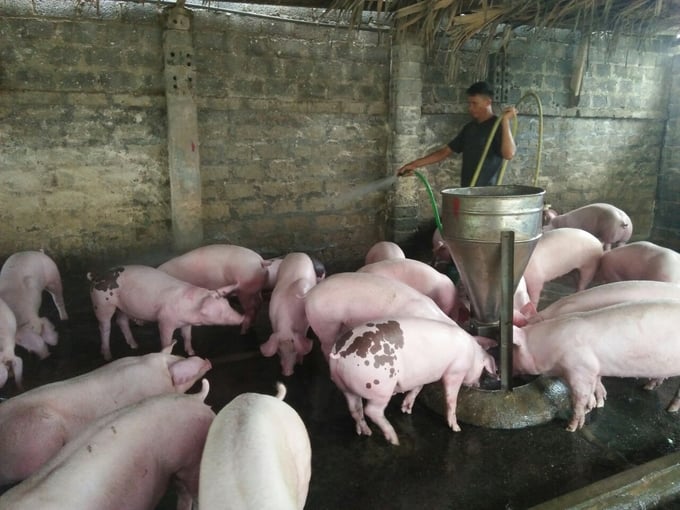
Treatment of livestock wastewater is still a difficult question for farms, especially small farms, which account for the majority of the livestock industry in Vietnam.
To clarify this perspective, the LCASP Project would like to give a practical example of two pig and dairy farms owned by Nguyen Van Thi in Binh Dinh and TH Truemilk Company.
Nguyen Van Thi is the owner of a farm raising 4,000 pigs on an area of 10 ha of barren sandy land in Cat Lam commune, Phu Cat district, Binh Dinh province. He has been using post-biogas wastewater to irrigate 8 ha of acacia forest, helping trees grow well while not polluting the environment. This action of his has helped the barren sandy soil area become more fertile.
But when the environmental inspection team came to inspect in 2019, the environmental manager thought that the post-biogas wastewater did not meet QCVN 62 and asked Thi to stop the farm’s activities. In order to continue raising livestock, the inspection team suggested he invest in a water purification facility which cost VND 500 million to filter wastewater before being allowed to irrigate acacia trees or direct discharge pipes to a nearby stream. For Thi, this was a costly investment which brought zero benefits, but he still had to do it to be allowed to raise livestock.

Breeding facilities have long been "living together" with the struggle and fear of being inspected because their livestock wastewater can hardly meet current requirements and regulations.
As for the case of TH Truemilk, the company wants to turn livestock wastewater into a source of nutritious water to irrigate grass for cows. But to meet QCVN 62 or B1 standard of QCVN 08-MT: 2015/BTNMT (QCVN 08 in short), the wastewater after treatment would be "as clear as rainwater" and no longer has fertilizer value. The company has also petitioned authorities at all levels, even the National Assembly Standing Committee, asking for a clear solution to this problem, but many years have passed, and so far it has not been resolved.
Livestock wastewater cannot be listed in the fertilizer category because its nutrient content does not meet the standards for fertilizer management. On the other hand, it also cannot be included in the category of irrigation water for the public irrigation system because the system requires higher standards.
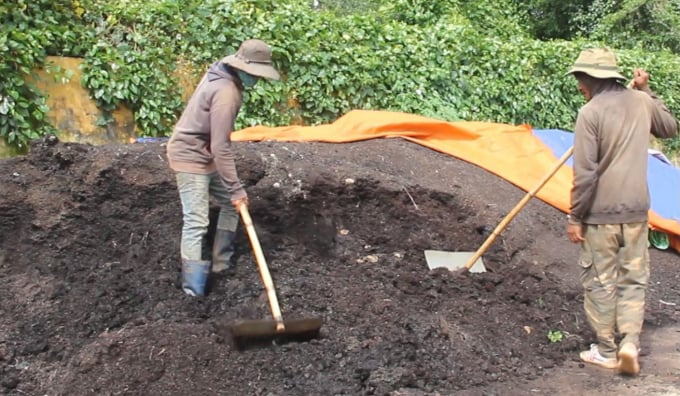
The lack of regulations on livestock wastewater for cultivation is causing "double waste" when the livestock industry has to bear very high costs to treat waste, while the agroproduction industry is very lacking in organic fertilizers.
Experts believe that the storage and use of livestock wastewater in livestock and farming areas require management but with other standards, not QCVN 62 or QCVN 08 because the storage of this livestock wastewater is for further treatment and reuse, similar to the fact that the environment in production facilities cannot claim to have the same pollutant concentration as the public environment. However, since there is no adjusted QCVN, the environmental inspection teams have no basis to accept the reuse of livestock wastewater on farms.
The agricultural sector should soon issue QCVN on livestock wastewater used for cultivation so that people can invest in technologies to reuse this resource effectively. This is actually a huge inadequacy in the process of managing the livestock environment in general and implementing QCVN 62 in particular which results in "double waste", meaning that farmers have to spend a fortune to treat wastewater while still wasting a great organic fertilizer source.
Translated by Samuel Pham

(VAN) During the working session with Deputy Minister Le Cong Thanh, Professor Francesco Corvaro, Italian Climate Change Envoy, reaffirmed Italy's commitment to supporting Vietnam in climate change response.

(VAN) After the merger, key leadership personnel of the provinces must consult with the General Secretary, key leaders, and the Standing Secretariat.

(VAN) The latest Business Benchmark on Farm Animal Welfare (BBFAW) reveals steady progress on farm animal welfare across the global food industry.
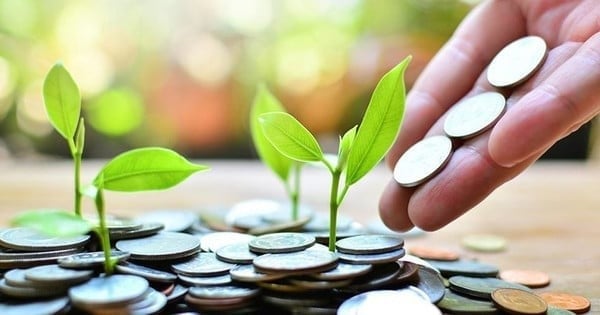
(VAN) Green credit is a financial policy that effectively supports environmentally friendly projects and activities today.
/2025/04/09/1049-2-165919_630.jpg)
(VAN) With a revenue of less than VND 30 billion/year, packaging producers are exempted from EPR liability under Decree No. 05/2025 newly issued.
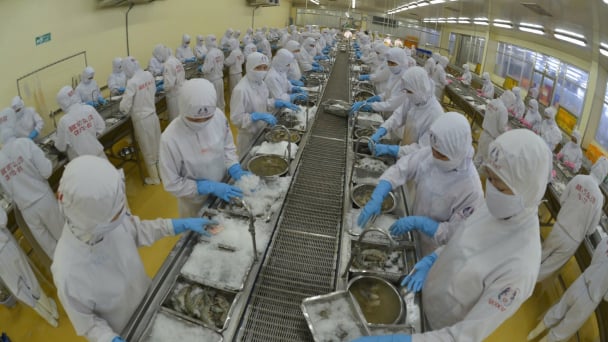
(VAN) Ministry of Agriculture and Environment has issued an Action Plan for sector's development in the coming period, aiming for a growth rate of 4% or higher and an export turnover of USD 65 billion.
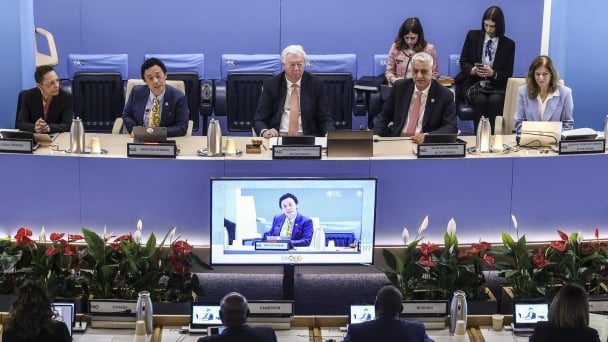
(VAN) The 177th Session of the FAO Council opened on Monday at the Organization’s headquarters in Rome.